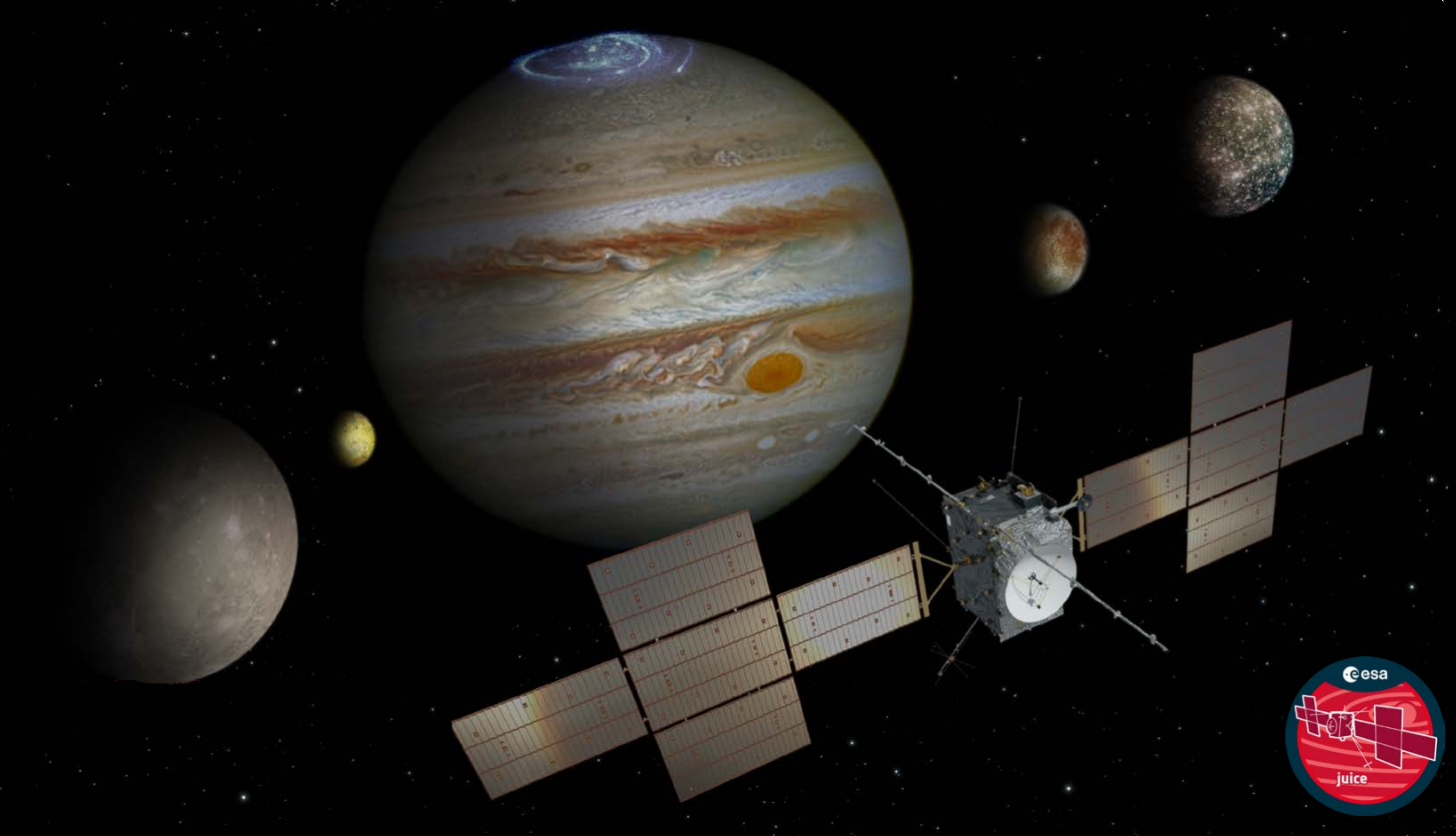Why is the JUICE probe heading towards Earth? The purpose of gravitational assistance
Published by Cédric,
Article author: Cédric DEPOND
Source: Cité de l'espace
Other Languages: FR, DE, ES, PT
Article author: Cédric DEPOND
Source: Cité de l'espace
Other Languages: FR, DE, ES, PT
Follow us on Google News (click on ☆)

Image Wikimedia
The JUICE probe, developed by the European Space Agency (ESA), aims to explore Jupiter's moons, particularly Ganymede, Callisto, and Europa. These ice-covered moons might harbor oceans beneath their surface, making this mission particularly intriguing for researchers. However, reaching Jupiter, approximately 500 million miles (800 million kilometers) from Earth, is no easy task. To get there quickly and in a straight line, the probe would have needed 60 metric tons (about 66 US tons) of fuel, a mass well beyond the capabilities of the Ariane 5 rocket that launched it.
To circumvent this issue, engineers employ a technique known as gravitational assistance. This method uses the gravity of celestial bodies to alter the trajectory of the probe and increase (or decrease) its speed while minimizing fuel consumption. For JUICE, this involves a series of planned flybys: after flying by the Moon at a distance of 435 miles (700 kilometers), the probe will fly by Earth at 4,230 miles (6,807 kilometers). This double flyby is a first in space history.
This maneuver allows JUICE to lose speed to head toward Venus, which it will fly by in 2025. Subsequently, the probe will perform two additional flybys of Earth in 2026 and 2029 to definitively adjust its trajectory toward Jupiter, arriving in 2031. Although lengthy, this strategy is the only viable solution to reach Jupiter without carrying an excessive amount of fuel.
In addition to altering JUICE's trajectory, this double flyby will also allow the ground team to test the probe's scientific instruments under conditions similar to those it will encounter around Jupiter's moons. ESA plans to share images captured during this unprecedented space rendezvous.